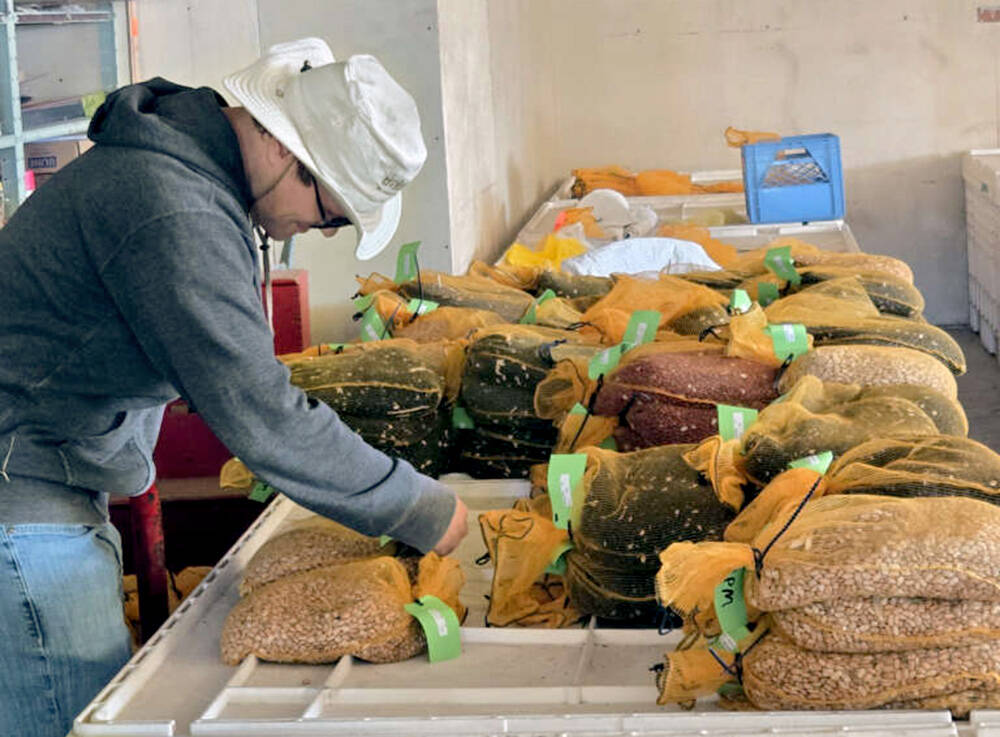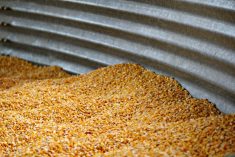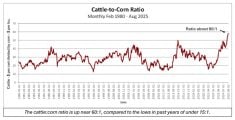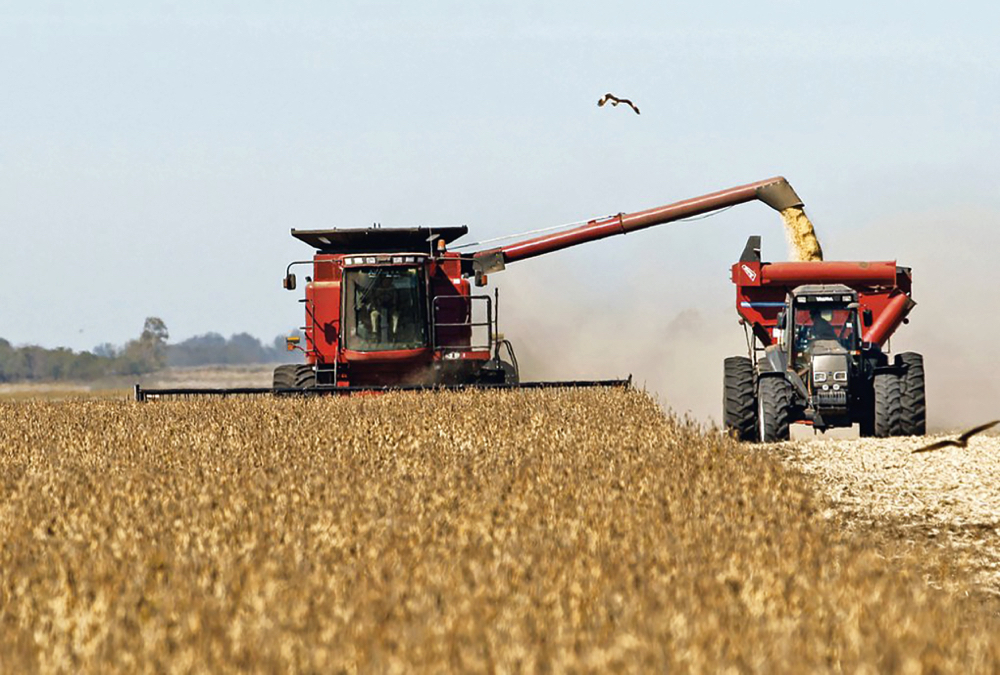The Ontario growing region received 60 to 85 per cent of normal precipitation between Aug. 18 and Sept. 18, and temperatures were within average to two degrees above normal. In most Ontario counties, crops have developed under favourable conditions. However, some farmers are reporting yield drag northeast of Toronto in the Peterborough and Kawartha Lakes counties.
Statistics Canada released its August model-based crop estimate on Sep. 14, which used satellite imagery and agroclimatic data to project yields and production. There were no significant changes from the July forecast. Ontario grain and oilseed prices are above average for this time of year and farmers will be aggressive sellers over the next two months.
Quick look
Soybeans: For the third year in a row, U.S. soybean fundamentals will be historically tight.
Corn: Corn exports to the U.S. are not expected.
Wheat: Market signals are bearish and producers are advised not to sell at this time.
Read Also

Bean research breeds community giving
University of Guelph dry bean researcher Dr. Mohsen Yoosefzadeh Najafabadi champions sustainability by donating surplus breeding program beans to support food security and community art initiatives.
The USDA’s September World Agriculture Supply and Demand Estimates (WASDE) was considered neutral to slightly bullish for corn and soybean prices. Both U.S. corn and soybean production forecasts were taken down from the August data resulting in lower U.S. ending stocks.
Chinese demand for soybeans remains uncertain due to lower economic growth projections. China’s corn production was raised by three million tonnes from the August data, resulting in lower import demand. There is no shortage of wheat in the world but Canadian and U.S. fundamentals will be tighter than last year, largely due to a year-over-year increase in offshore demand. here is a strong seasonal tendency for the wheat market to rally from Sept. 15 through
Nov. 15.
At the time of writing this article, the Canadian dollar was trading near two-year lows around 75 U.S. cents. It appears interest rate hikes from the Bank of Canada will top out sooner and slightly lower than the U.S. Federal Reserve. Short-term bond yields south of the border are now premium to their Canadian counterparts.
Canadian federal fiscal and Liberal government policy is also negative for the Canadian dollar. Large deficits in a rising interest rate environment are detrimental to the economy longer-term. Deficits are futures taxes. A weaker Canadian dollar will continue to enhance demand for corn, soybeans and wheat. We believe U.S. crude oil stocks are dropping to dangerously low levels. The U.S. crude oil release program ends in October.
Soybeans
Statistics Canada’s August model-based crop estimate had Ontario soybean production at 4.111 million tonnes, relatively unchanged from the July forecast of 4.088 million tonnes and similar to the year-ago output of 4.082 million tonnes. The five-year average output is 3.9 million tonnes.
We’re expecting Ontario farmers to deliver three million tonnes of soybeans into the commercial system from Sept. 1 through Dec. 31. This will keep basis levels under pressure throughout the fall period. On-farm stocks on Dec. 31 are forecasted to come in at one million tonnes. Once the domestic demand is saturated, elevator bid prices move in line with the world market.
U.S. soybean production is now expected to finish near 119.2 million tonnes, down from the August estimate of 123.3 million tonnes. This compares to the 2021 output of 120.7 million tonnes. Given the demand projections, the U.S. soybean fundamentals will be historically tight for the third year in a row.
Timely rains have occurred in Brazil, where farmers have started planting early soybeans. The market focus will shift from U.S. production to South American production over the next month. At this time, the USDA is expecting Brazilian production (harvested in February and March 2023) to reach 149 million tonnes, up from the previous years crop size of 126 million tonnes.
The Argentine output is expected to finish at 51 million tonnes, up seven million tonnes from this past spring. The census on China remains negative. The softer economic outlook for the remainder of 2022 and first half of 2023 suggests that soybean import demand will be down from the 2021-22 crop year. The global fundamental perspective on soybeans is somewhat negative.
This doesn’t confirm that Ontario farmers should sell all their soybeans in the first half of the crop year. The Ontario soybean market functions to encourage demand in the first half. The domestic market functions to ration demand in the latter half of the crop year by trading at a premium to world values. The North American economy has divorced from China, Europe and the rest of world. Energy demand will remain firm in North America and we expect oil prices to trend higher over the winter. This will enhance soyoil demand. Keep in mind that domestic meal usage makes a seasonal high over the winter.
Finally, South American crop estimates are only written in pencil. We still have the main growing season ahead and there are many variables that could trim production.
What to do: We’ve advised Ontario farmers to sell 20 per cent of their expected production. We’re planning to make our next sale later in fall once harvest pressure subsides. We’ll monitor South American crop conditions and energy markets to determine sales recommendations over the winter.
Corn
Ontario corn production was estimated at 9.804 million tonnes on Statistics Canada’s August crop forecast, unchanged from the July result and up from the year-ago output of 9.5 million tonnes. This is up nearly 900,000 tonnes from the five-year average.
Ontario corn fundamentals are burdensome. The market will function to encourage export demand in the first half of the crop year. Ontario farmers are expected to sell six million tonnes of corn from Sept. 1 through Dec. 30.
The USDA estimated U.S. corn production at 354 million tonnes on its September WASDE report. This is down from the August estimate of 364 million tonnes and down from the 2021 crop of 384 million tonnes. The lower production caused the U.S. ending stocks forecast to drop to 31 million tonnes, down from the 2021-22 ending stocks of 38.7 million tonnes and down from the five-year average of 45.9 million tonnes.
Contrary to the Ontario fundamentals, the U.S. corn market will function to ration demand away from export channels. At the time of writing this article, U.S. corn out of the Gulf was a valued at US$324 per tonne; Brazilian origin was quoted at $290 per tonne f.o.b. Paranagua. Ontario corn was valued at US$292 per tonne f.o.b. St. Lawrence.
Brazil’s exportable surplus will dry up over the winter and their main corn crop, known as the Safrinha production, will only come on stream in May.
It’s important to note that U.S. corn in the eastern corn belt was much better than the western half. Prices in Chicago and Toledo are equivalent to Ontario. We don’t expect corn exports to the U.S.
French corn was offered at US$328 f.o.b. La Pallice. Trade estimates now have European corn production around 59 million tonnes, up from previous estimates that averaged 55 million tonnes but down from last year’s crop of 73 million tonnes.
The drought was not as bad as expected. How many times have we heard that? Given current freight spreads, Ontario corn has an advantage into Northern European countries over French and Brazilian origin. European demand should limit the downside in Ontario corn prices.
What to do: We’ve advised producers to be 20 per cent sold on their 2022 production. We’re planning to make our next sale in November. Given the later harvest period of Brazil’s Safrinha crop, it is important for Ontario producers to sell 50 per cent of their production in the latter half of the crop year.
Wheat
Statistics Canada’s August production estimate was unchanged from the July result. Ontario farmers harvested two million tonnes of winter wheat this summer, down from last year’s output of 2.7 million tonnes and down from the five-year average of 2.1 million tonnes.
Ontario spring wheat production was estimated at 135,000 tonnes. Given historical patterns, Ontario farmers will sell approximately 1.7 million tonnes of wheat in first five months of the crop year. Ontario on-farm total wheat stocks (spring and winter wheat) on Dec. 31 are expected to come in at 300,000 tonnes.
We advise farmers to spread their sales throughout the crop year. The wheat market tends to make the first seasonal high during the first half of November. The second seasonal high tends to occur as the Northern Hemisphere winter wheat crop comes out of dormancy in late February or early March. The Northern Hemisphere harvest occurs from June through August. Argentina and Australia harvest during December and January. Producers want to avoid selling during the harvest periods.
U.S. wheat farmers sell nearly 50 per cent of their wheat in the summer months. The March 2023 contract is trading at a 16 cents per bushel premium to the December 2022 contract. This futures spread is near full carry. The market is telling producers to sell today for delivery in March 2023. When the futures spread is near full carry, it is a bearish signal.
What to do: We advised Ontario farmers to be 10 per cent sold on their winter wheat. Our strategy is to increase sales later in November. The Chicago December-March spread is trading near full carry, which is a bearish signal. The market does not want your wheat at this time. Listen to the market.













